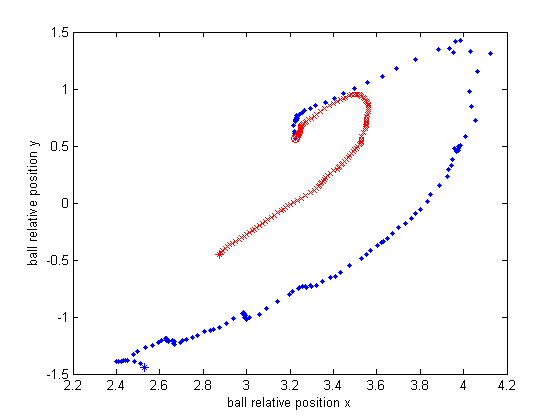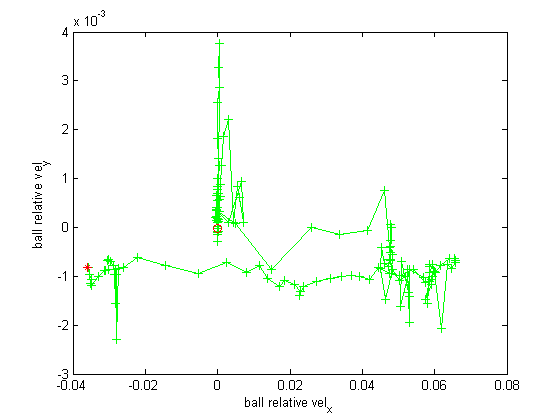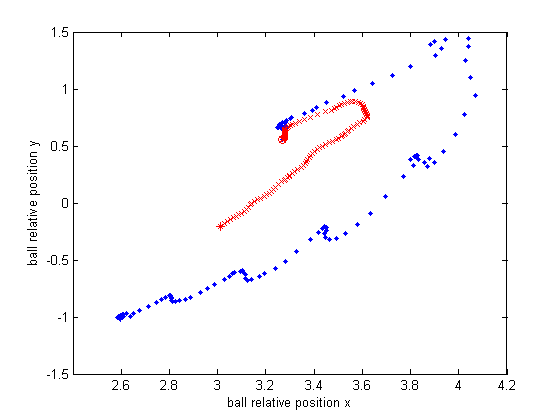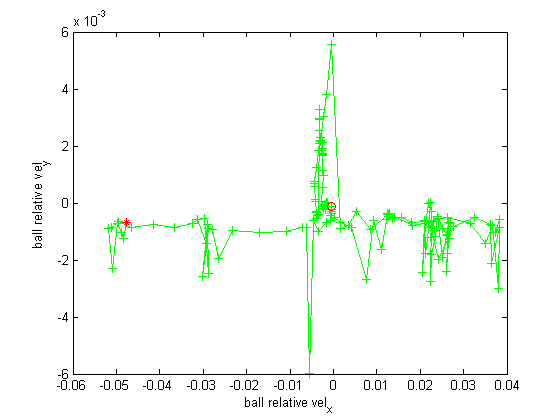I put the ball on a ramp starting at (2.7, 0). The ball then rolls off the ramp with a speed roughly 0.75m/sec. The following graphs show the result.
- KF overshoots
- PF has a constant lag.




I should log the observations in each cycle! But why is the absolute velocity predicted so small? Should I replace .04 in the model with 1.0?? Or just multiply 25 to get the true speed? but why?
Test tonight:
- log observation
- tune constant in the model?
- look at the predicted location of the ball some fixed time step, T, into the future.
- Compare the resulting location of the ball observed at T.
- Do this for a range of observations
- plot the x-y error on a 2D plot and calculate mean and variance in x and y.